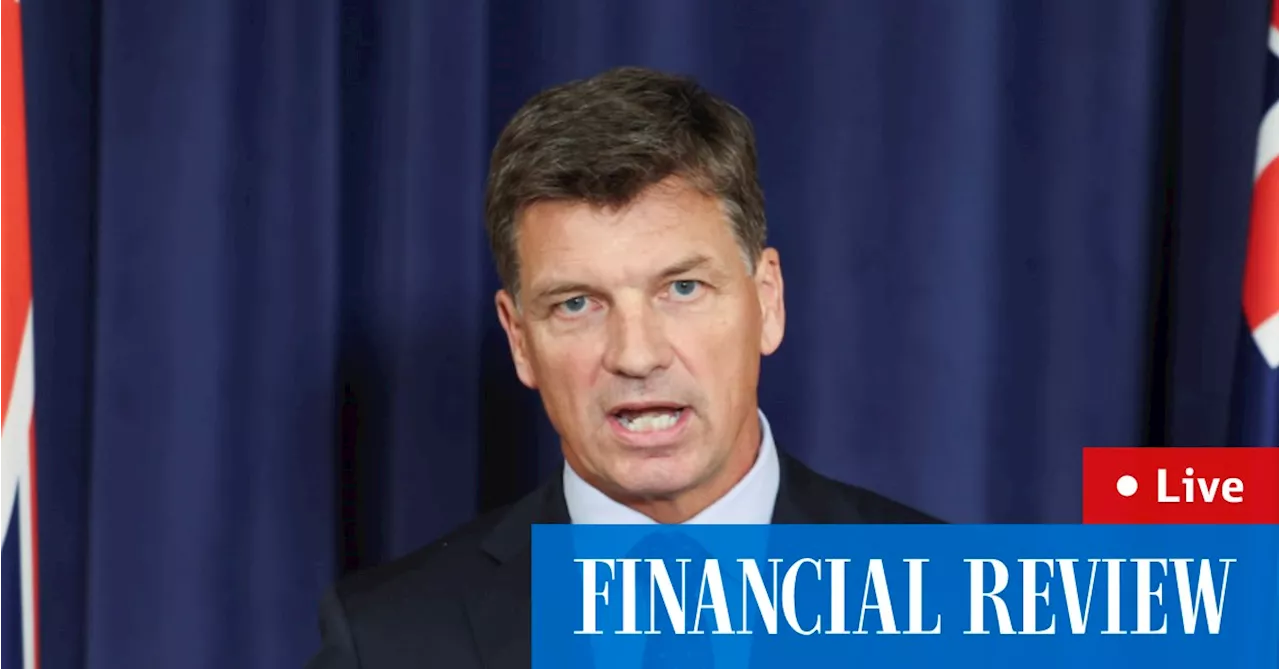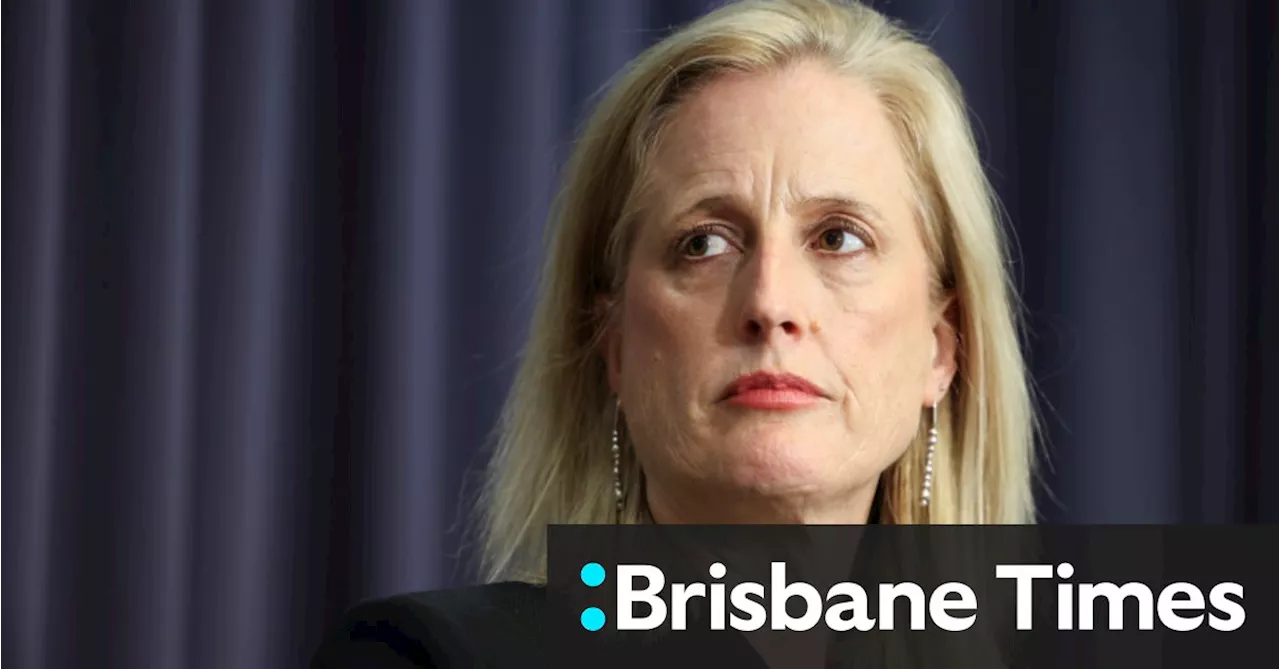The surge in public sector jobs, particularly in healthcare and education, has ignited debate about the impact on inflation and the upcoming Australian election. Economists warn that government spending to create jobs could exacerbate price pressures, while the opposition criticizes the growth as unsustainable.
More than four out of five jobs filled in the past two years have been in public service, health and education, prompting warnings from economists that the government’s focus on adding jobs could continue to fuel inflation. While there have long been calls to end the shortage of nurses and teachers, the growth in jobs tied to government spending will be a flashpoint in the upcoming election amid concerns that it is adding to price pressures.
The Albanese government has repeatedly claimed the Coalition would cut 36,000 public service jobs after Nationals leader David Littleproud last year said it was the “first thing” they would do, and a Liberal Party website cited the number under an example of policy. However, a spokesperson for shadow public service minister Jane Hume said no commitment had been made to slash the public service headcount, and that the Coalition’s position was to halt growth. Speaking at a doorstop in Canberra on Monday, newly sworn-in Government Services Minister Katy Gallagher said laying off 36,000 public servants was unrealistic. “This sort of furphy that you can just sack 20 per cent of the workforce ... is just ridiculous,” she said. “Without those 36,000 jobs, services like being provided to people will not be able to be done.” Hume noted the federal public service had grown by 20 per cent – or 36,000 jobs – under Labor, but said “you’d be hard-pressed to find an Australian that believes they’re being 20 per cent better served” by the government. “You don’t grow the economy by growing the size of government. Every public sector job has to be paid for by a private sector worker.” The debate follows a pre-Christmas warning from the International Monetary Fund that government spending cuts, including delaying public infrastructure investment, may be needed to get inflation back on track. The Reserve Bank’s preferred measure of inflation slowed to 3.5 per cent in September last year, but remains above its target band of 2 to 3 per cent. Australian Bureau of Statistics data from the September quarter last year shows 87 per cent of the growth in employment since March 2023 has been in what are called non-market sectors: areas tied to government services such as education, healthcare and public administration. Shadow Treasurer Angus Taylor said the public sector was “strangling” the private sector to death. “Had and his state colleagues shown a modicum of restraint over the past two and a half years, interest rates would be lower, which would have stimulated private-sector activity and employment,” he said. Purely public sector jobs – those directly employed in federal, state and local government – made up a smaller proportion, about 29 per cent, of employment growth from March 2023 to September 2024. More than two-thirds of employment growth was in healthcare and social assistance, largely bolstered by the $49 billion National Disability Insurance Scheme, which outgoing minister for the NDIS Bill Shorten credited with employing more than 300,000 full-time workers. Liberal public service spokeswoman Jane Hume says Australians haven’t seen a 20 per cent increase in improvements from the 20 per cent increase in the public service. AMP chief economist Shane Oliver said jobs in sectors such as healthcare were important, but the government had probably focused too much on boosting employment over dampening inflation. “The government helped to avoid a recession, but it arguably made the inflation problem worse,” he said. “It’ll be challenging in an election year, but the government probably needs to cut spending in some areas to make up for any extra spending in others.” Reserve Bank Governor Michele Bullock last month rebuffed claims that growth in the non-market sector was bad. “It’s teachers, it’s nurses, it’s aged care workers,” she said. “These are all people that we need. So I don’t buy into the idea that growth in non-market sector employment is not a good thing.” Deloitte Access Economics partner Stephen Smith said government spending needed to be sustainable, but the issue was weak growth in the private sector rather than overly strong growth in the non-market sector.“It’s a mistake to suggest non-market jobs aren’t valuable or important,” he said. “They’re needed and Australians expect these services to be provided. The issue is that the broader economy is not growing as quickly and that there needs to be measures to support productivity growth in both market and non-market sectors, such as changes to encourage more business investment.” At a press conference last week, Treasurer Jim Chalmers defended the government’s focus on job preservation and growth, saying 1.1 million jobs had been created under the Albanese Labor government. “We’ve shown that we can make substantial and sustained progress on inflation while creating jobs, not sacrificing jobs,” he said.
PUBLIC SECTOR JOBS INFLATION ELECTION AUSTRALIA GOVERNMENT SPENDING ECONOMY
Australia Latest News, Australia Headlines
Similar News:You can also read news stories similar to this one that we have collected from other news sources.
 The Australian Job Market: A Ghostly Encounter for ManyChris's job search exemplifies the widespread issue of 'ghosting' in the Australian job market. New LinkedIn data reveals that over half of Australian job seekers have experienced this lack of communication from hiring managers. This article explores the challenges faced by both job seekers and hiring managers in the current job market, including the high volume of applications, difficulty matching skills to job descriptions, and the struggle to negotiate competitive salaries.
The Australian Job Market: A Ghostly Encounter for ManyChris's job search exemplifies the widespread issue of 'ghosting' in the Australian job market. New LinkedIn data reveals that over half of Australian job seekers have experienced this lack of communication from hiring managers. This article explores the challenges faced by both job seekers and hiring managers in the current job market, including the high volume of applications, difficulty matching skills to job descriptions, and the struggle to negotiate competitive salaries.
Read more »
 Budget Blowout Fears as Government Fails to Fund Public Sector WagesThe Australian government is facing criticism for its handling of public sector wages in the budget, with the Shadow Treasurer warning of a potential $7.4 billion blowout.
Budget Blowout Fears as Government Fails to Fund Public Sector WagesThe Australian government is facing criticism for its handling of public sector wages in the budget, with the Shadow Treasurer warning of a potential $7.4 billion blowout.
Read more »
 Record Australian Job Growth Clouds Rate Cut ProspectsAustralia's unemployment rate edged up slightly in December, but a record number of new jobs have made it less likely that the Reserve Bank of Australia will cut interest rates next month.
Record Australian Job Growth Clouds Rate Cut ProspectsAustralia's unemployment rate edged up slightly in December, but a record number of new jobs have made it less likely that the Reserve Bank of Australia will cut interest rates next month.
Read more »
 Australian grand slam champion Max Purcell accepts doping ban on eve of Australian Open7NEWS brings you the latest local news from Australia and around the world. Stay up to date with all of the breaking sport, politics, entertainment, finance, weather and business headlines. Today's news, live updates & all the latest breaking stories from 7NEWS.
Australian grand slam champion Max Purcell accepts doping ban on eve of Australian Open7NEWS brings you the latest local news from Australia and around the world. Stay up to date with all of the breaking sport, politics, entertainment, finance, weather and business headlines. Today's news, live updates & all the latest breaking stories from 7NEWS.
Read more »
 Australian Tennis Players Vie for Australian Open QualificationAustralian players are gearing up for the Australian Open qualification rounds, aiming to secure a spot in the main draw. Marc Polmans, one of 15 wildcard recipients, highlights the intense competition and the physical demands of the qualifying process.
Australian Tennis Players Vie for Australian Open QualificationAustralian players are gearing up for the Australian Open qualification rounds, aiming to secure a spot in the main draw. Marc Polmans, one of 15 wildcard recipients, highlights the intense competition and the physical demands of the qualifying process.
Read more »
 Kokkinakis Hopes to Ignite Australian Comeback at Australian OpenThanasi Kokkinakis faces Jack Draper in a battle of the wounded at the Australian Open, hoping to spark a resurgence for Australian players after a string of early exits. The match takes place amidst weather disruptions and a battle for momentum on the court.
Kokkinakis Hopes to Ignite Australian Comeback at Australian OpenThanasi Kokkinakis faces Jack Draper in a battle of the wounded at the Australian Open, hoping to spark a resurgence for Australian players after a string of early exits. The match takes place amidst weather disruptions and a battle for momentum on the court.
Read more »
